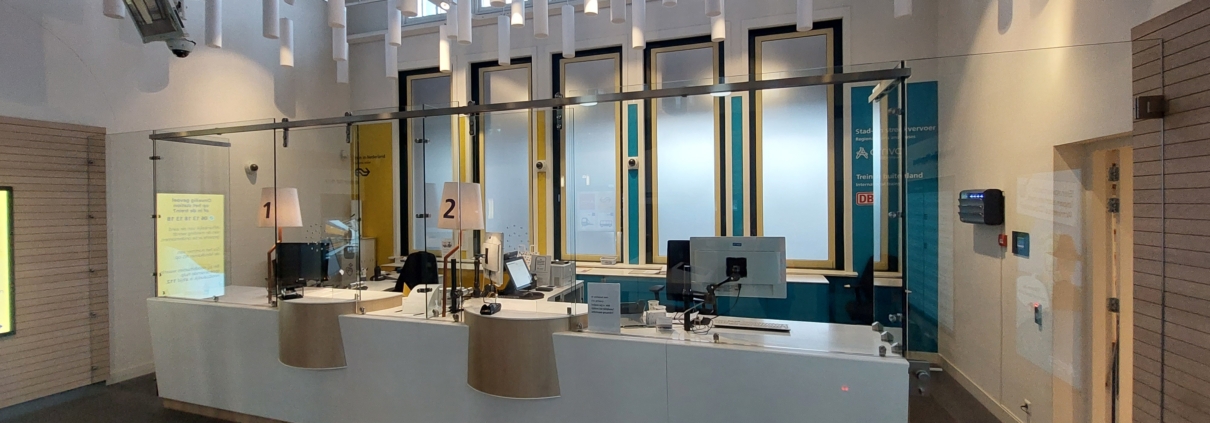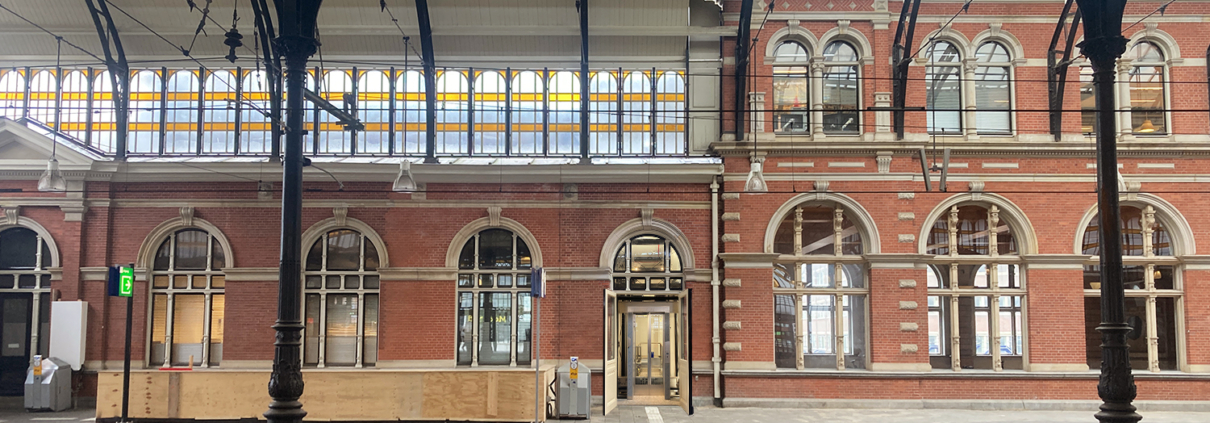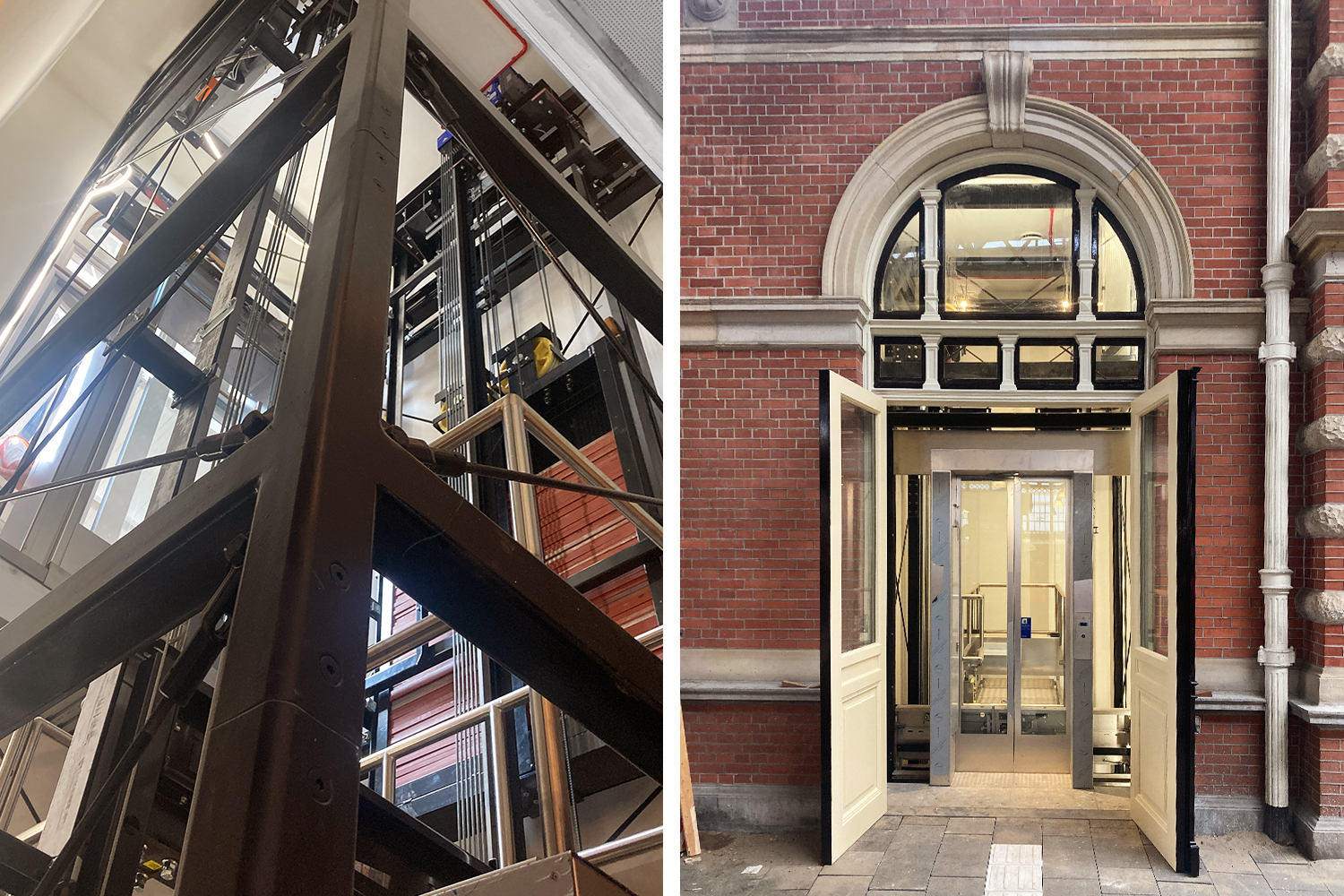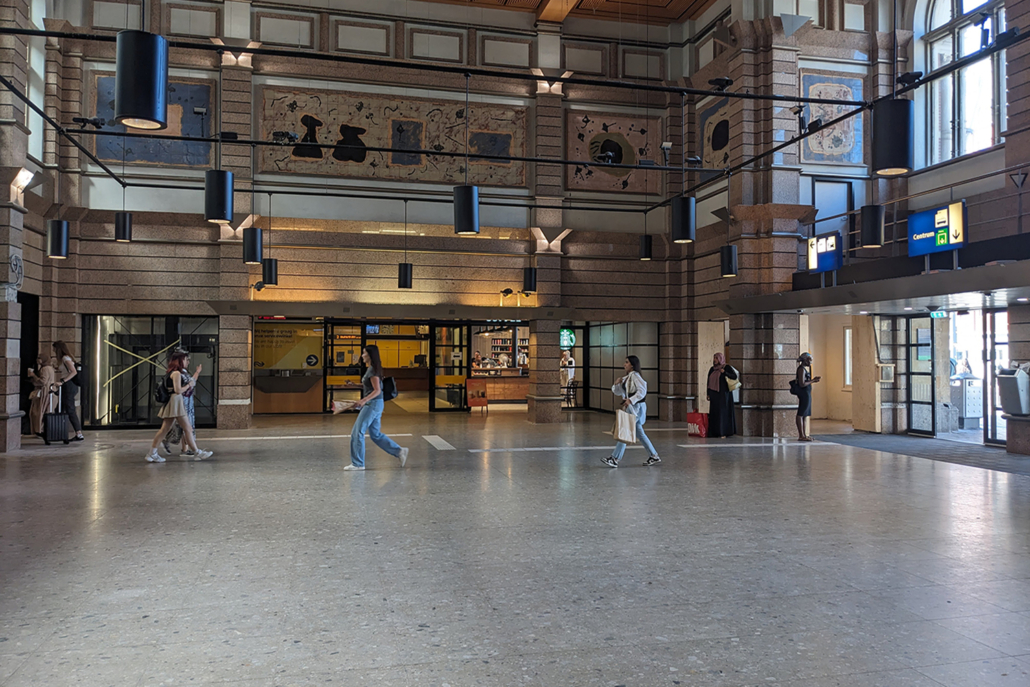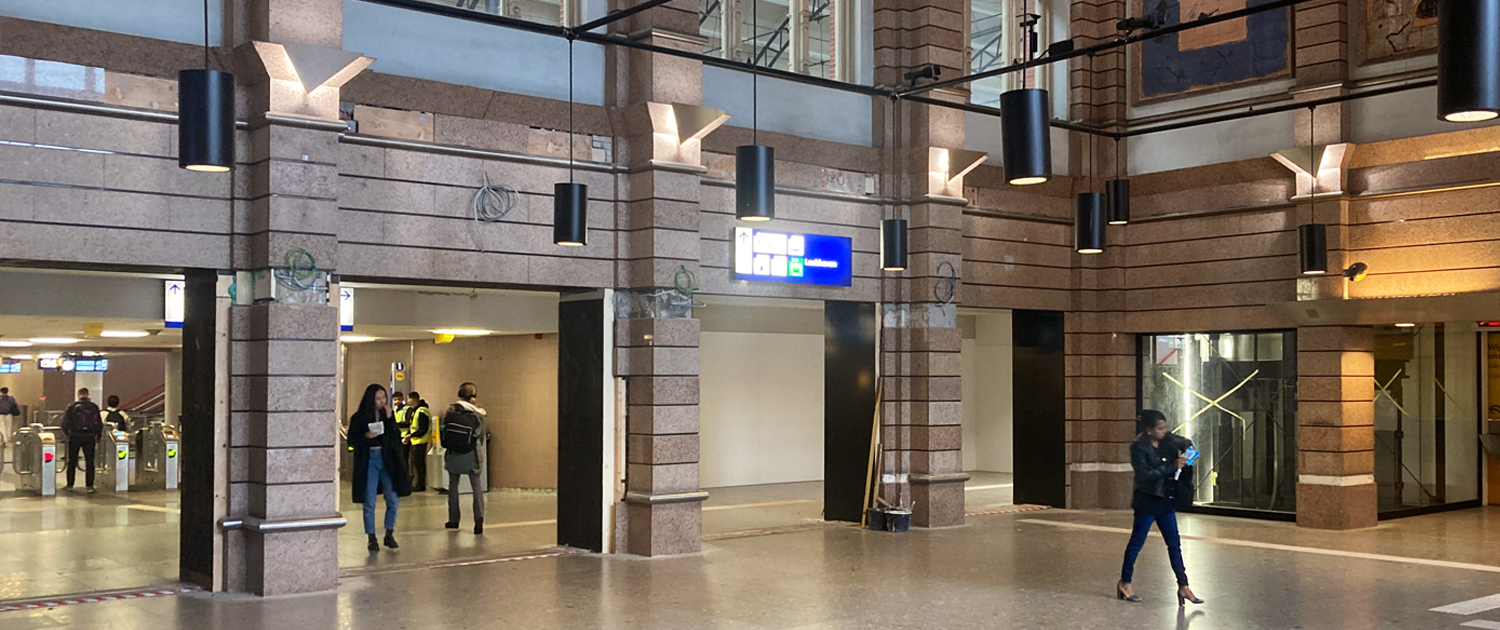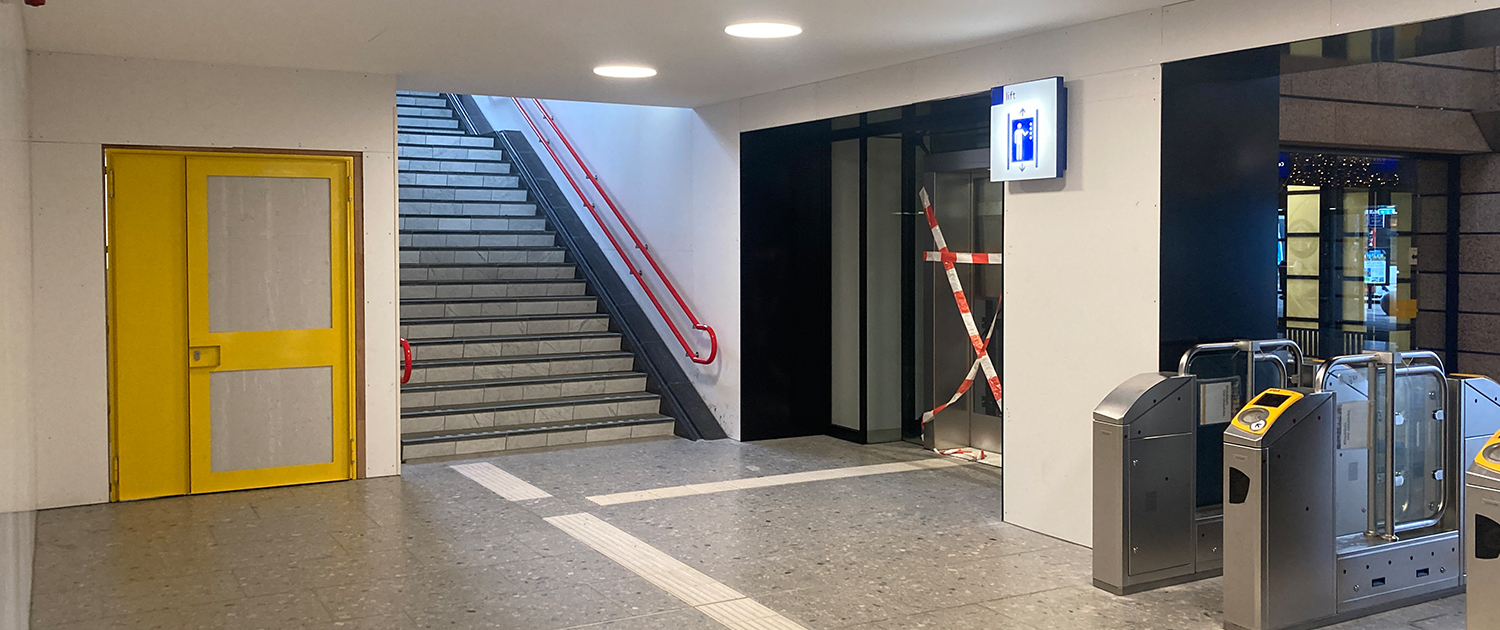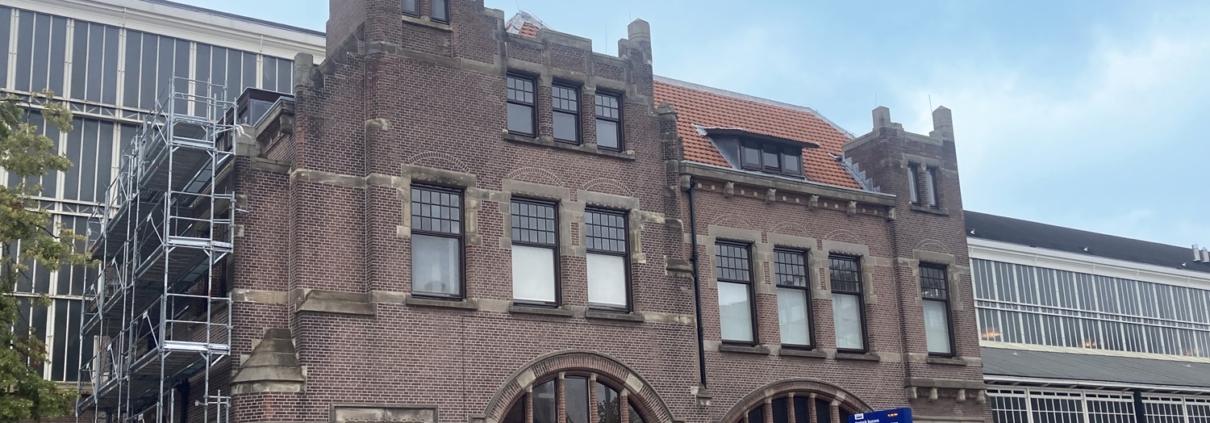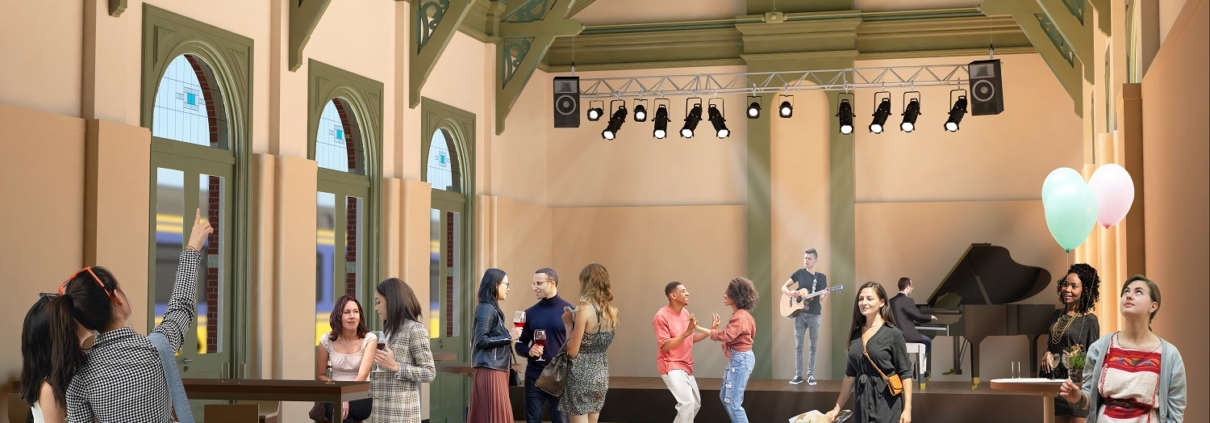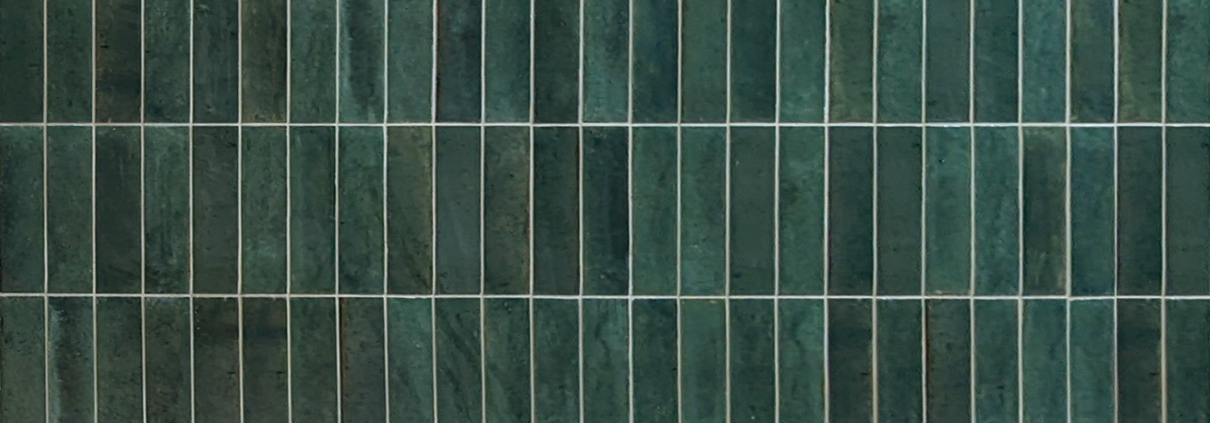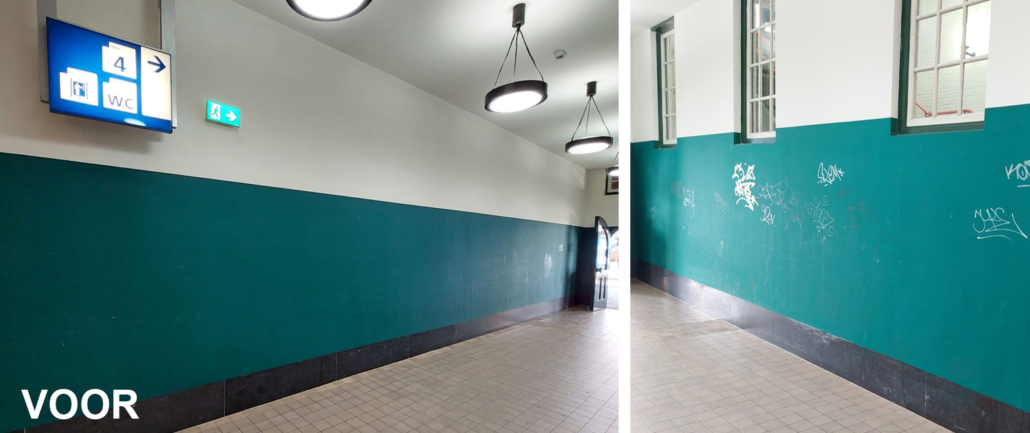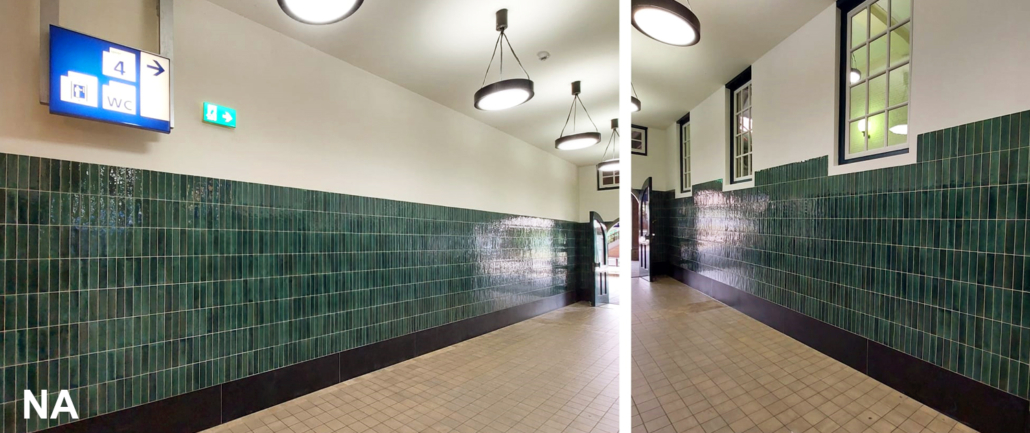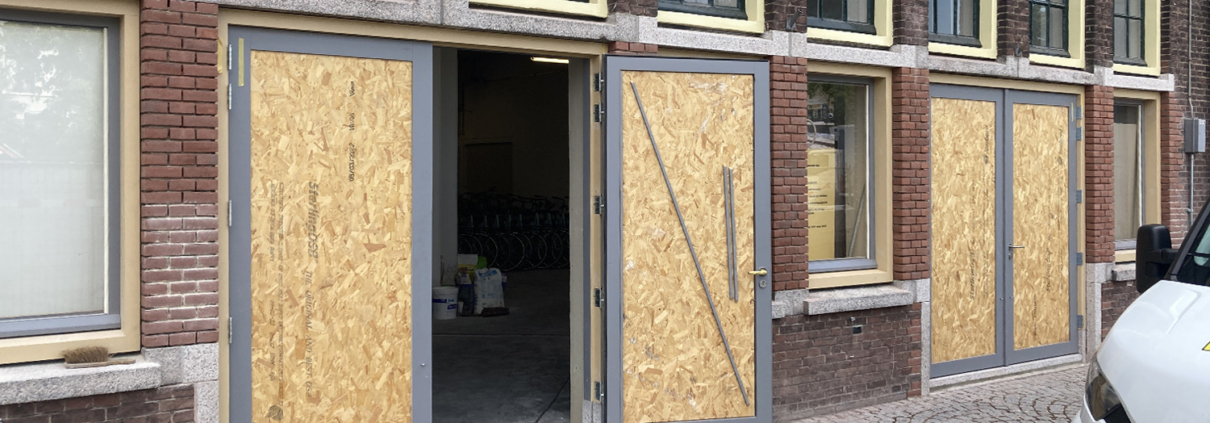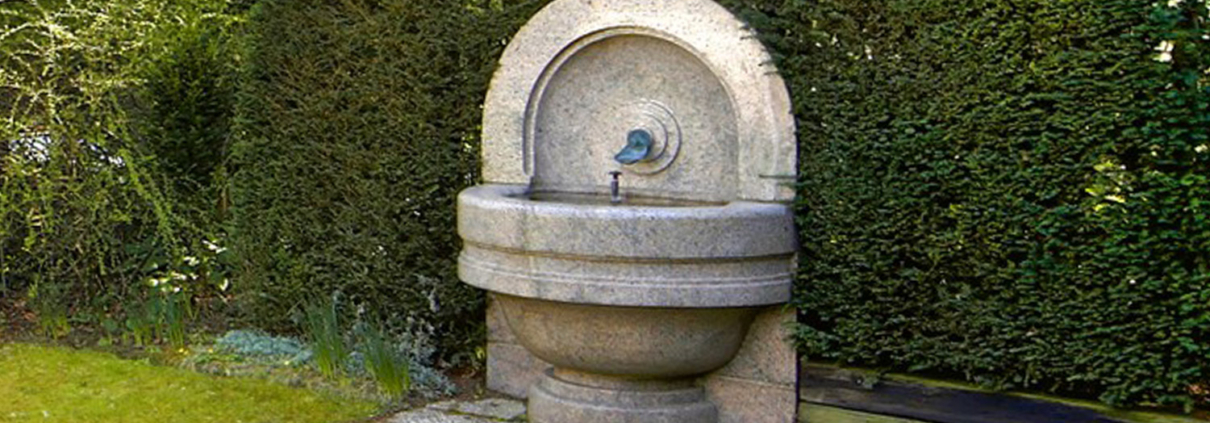Haarlem Station entrance doors in production
The Haarlem railway station building is a national monument and one of the best preserved examples of station architecture from the early 20th century. The later installed steel sliding entrance doors on Stationsplein have reached the end of their lifespan. NS Stations and ProRail want to replace the sliding doors with regular doors that remain open during the station’s opening hours.
A design has been made for this in which the sliding doors are replaced by a reconstruction of the original doors. Through archival research, the original construction drawings of the doors have been found, together with the text specification, a color research and references elsewhere in the building, the doors can be accurately reconstructed.




